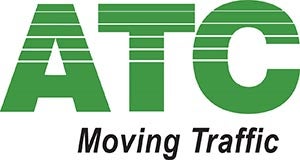The SCATS® Specialists
ATC are an authorised distributor of the world-leading SCATS® Urban Traffic Management Control (UTMC) System. We have a large team of SCATS® qualified technical personnel to support customers in the design, deployment and implementation of the SCATS® system.
What is SCATS®?
The SCATS® UTMC is an MS-Windows based software solution that works in a tiered fashion via one or more Regional Controllers (RC), which means traffic authorities are getting a highly redundant and therefore resilient system for maximum visibility and control of traffic. A SCATS® system generally has a designated Central Manager (CM) and one or more RCs, which may run on the same physical server or different physical servers located in other geographic locations. A central Manager can manage up to 64 RC systems. Each RC is uniquely identified and can perform coordination on a maximum of 250 intersection Traffic Signal Controllers.
Continuous Intersection Control
A loss of communications between a Central Manager and a Regional Computer or between a Regional Computer and Traffic Signal Controllers does not result in a loss of service but a continued service with modified behaviour and continued control of the intersection at all times. In addition, SCATS(R) provides a fallback configuration whereby the ATSC4 controller will store the optimal time settings used by SCATS to ensure that intersection stays in synchronisation of its signal timing as if SCATS were controlling that intersection (as well as the other intersections in a coordinated signal corridor), this means the road users will not be affected by the temporary loss of communications to SCATS.
SCATS® Compliant Traffic Signal Controllers
ATC has designed its latest generation of the ATSC4 Traffic Signal Controller to be compatible with SCATS® to provide traffic authorities with a single supplier solution for complete Urban Traffic Management Systems.
SCATS New Cities
SCATS is a leading adaptive traffic signalling control system with over 40 years of development by TfNSW who use SCATS themselves in Sydney Australia with over 4200 intersections under control of one system. ATC can assist with any city around the world wishing to implement this leading Adaptive Traffic Signal Control System by contacting ATC’s Marketing Manager by telephone on +61 2 8846 5599 or by email and ATC will work with the end-user to install and commission the system as well as provide training to the Operators and Configuration personnel.
ATSC4
Introducing the ATSC4 Traffic Controller, this is the new generation controller developed to the Roads & Maritime Services (Australia) TCS/4 specification. The ATSC4 is capable of managing up to 32 signal (phase) group displays and up to 64 inputs from vehicles, pedestrians, bicycles or emergency services. It is an integral part of any modern adaptive Urban Traffic Management Control (UTMC) system and is fully SCATS® compatible. The controller can operate independently in isolated mode and can be connected to SCATS® for system operation or in a mains frequency coordinated flexible plan operation mode.
User Interface
A unique windows laptop interface programme, ATSUI, provides an extensive, easy-to-interpret interface to the controller which delivers a comprehensive colour display of the live intersection, communications monitors, lamp switching, detector inputs and has access to all operating and timing functions, including fault reporting.
Design
The ATSC4 is designed for all weather conditions with a vandal-proof cabinet and modular construction for ease of maintenance. The controller can operate with a variety of power supply options, with low power consumption. The ATSC4 is capable of managing all types of lanterns including, incandescent, quartz halogen and LED. This controller has been designed, developed and tested to internationally accepted safety standards, features such as last red and flashing yellow provide added safety during malfunctions. The ATSC4 is a state of the art Traffic Signal Controller that has distributed processors in all modules able to report detailed statistical information as well as configuration information. All individual information can be accessed via the advanced ATSUI programme on a laptop PC.











